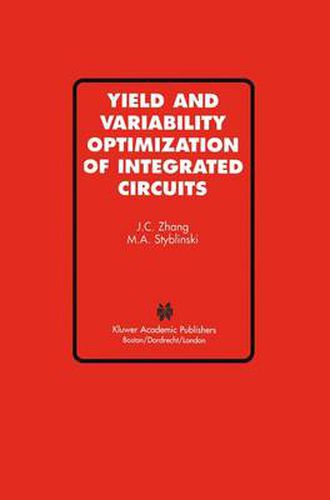Readings Newsletter
Become a Readings Member to make your shopping experience even easier.
Sign in or sign up for free!
You’re not far away from qualifying for FREE standard shipping within Australia
You’ve qualified for FREE standard shipping within Australia
The cart is loading…






This title is printed to order. This book may have been self-published. If so, we cannot guarantee the quality of the content. In the main most books will have gone through the editing process however some may not. We therefore suggest that you be aware of this before ordering this book. If in doubt check either the author or publisher’s details as we are unable to accept any returns unless they are faulty. Please contact us if you have any questions.
Traditionally, Computer Aided Design (CAD) tools have been used to create the nominal design of an integrated circuit (IC), such that the circuit nominal response meets the desired performance specifications. In reality, however, due to the disturbances ofthe IC manufacturing process, the actual performancesof the mass produced chips are different than those for the nominal design. Even if the manufacturing process were tightly controlled, so that there were little variations across the chips manufactured, the environmentalchanges (e. g. those oftemperature, supply voltages, etc. ) would alsomakethe circuit performances vary during the circuit life span. Process-related performance variations may lead to low manufacturing yield, and unacceptable product quality. For these reasons, statistical circuit design techniques are required to design the circuit parameters, taking the statistical process variations into account. This book deals with some theoretical and practical aspects of IC statistical design, and emphasizes how they differ from those for discrete circuits. It de scribes a spectrum of different statistical design problems, such as parametric yield optimization, generalized on-target design, variability minimization, per formance tunning, and worst-case design. The main emphasis of the presen tation is placed on the principles and practical solutions for performance vari ability minimization. It is hoped that the book may serve as an introductory reference material for various groups of IC designers, and the methodologies described will help them enhance the circuit quality and manufacturability. The book containsseven chapters.
$9.00 standard shipping within Australia
FREE standard shipping within Australia for orders over $100.00
Express & International shipping calculated at checkout
This title is printed to order. This book may have been self-published. If so, we cannot guarantee the quality of the content. In the main most books will have gone through the editing process however some may not. We therefore suggest that you be aware of this before ordering this book. If in doubt check either the author or publisher’s details as we are unable to accept any returns unless they are faulty. Please contact us if you have any questions.
Traditionally, Computer Aided Design (CAD) tools have been used to create the nominal design of an integrated circuit (IC), such that the circuit nominal response meets the desired performance specifications. In reality, however, due to the disturbances ofthe IC manufacturing process, the actual performancesof the mass produced chips are different than those for the nominal design. Even if the manufacturing process were tightly controlled, so that there were little variations across the chips manufactured, the environmentalchanges (e. g. those oftemperature, supply voltages, etc. ) would alsomakethe circuit performances vary during the circuit life span. Process-related performance variations may lead to low manufacturing yield, and unacceptable product quality. For these reasons, statistical circuit design techniques are required to design the circuit parameters, taking the statistical process variations into account. This book deals with some theoretical and practical aspects of IC statistical design, and emphasizes how they differ from those for discrete circuits. It de scribes a spectrum of different statistical design problems, such as parametric yield optimization, generalized on-target design, variability minimization, per formance tunning, and worst-case design. The main emphasis of the presen tation is placed on the principles and practical solutions for performance vari ability minimization. It is hoped that the book may serve as an introductory reference material for various groups of IC designers, and the methodologies described will help them enhance the circuit quality and manufacturability. The book containsseven chapters.